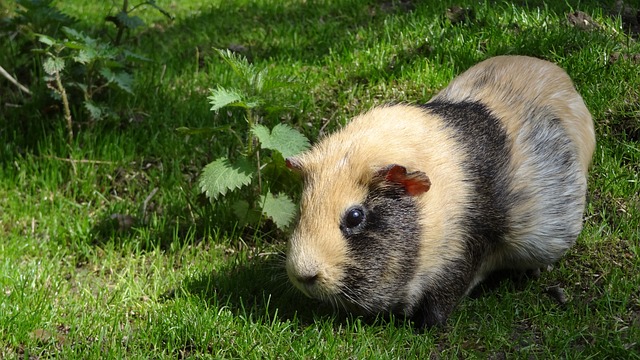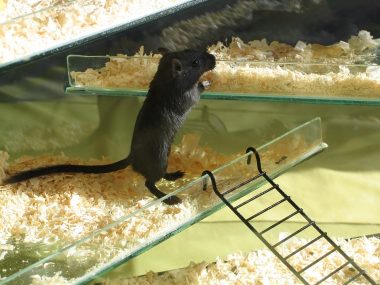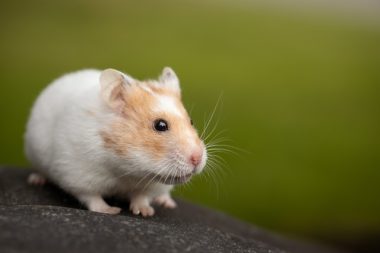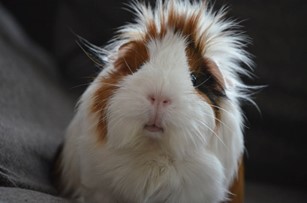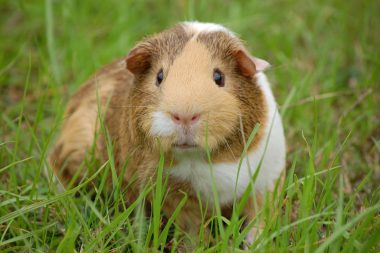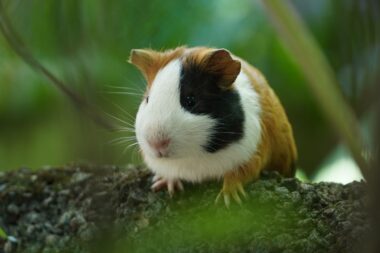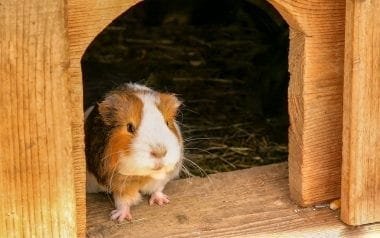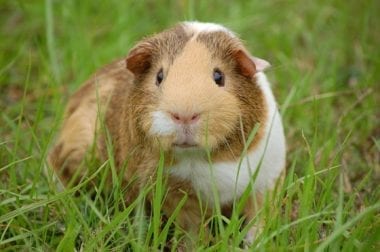Table of Contents Hide
Guinea pigs are adorable household pets. But these little critters also mature early both physically and sexually. Guinea pig pups are born with their hair and teeth. They are also able to walk and eat solid foods right after being born. These tiny critters also reach sexual maturity quite early on in their lives. They are notorious for becoming sexually mature within weeks or months of their birth. Female guinea pigs are ready to become pregnant and give birth as early as two months of age. Male guinea pigs reach sexual maturity as early as three weeks! Guinea pigs are also notoriously frisky animals and prolific breeders. This makes it a particularly difficult challenge to ensure that you avoid having one too many guinea pig pups to deal with.
While in some cases, you may get a female guinea pig home and be unaware that she is pregnant, most births at home occur through breeding. But pregnancy is a difficult and laborious process for female guinea pigs. In some cases, it can even be life-threatening. On average, it is estimated that about 20 percent of female guinea pigs die during birth. Complications may also arise, especially if the guinea pig is older than 7 months. These complications can cause serious problems for your pet and prove costly to treat. A female guinea pig can get pregnant immediately after pregnancy as she may go into heat right after delivering her pups. Male offspring can also become sexually active as early as 21 days or three weeks and impregnate their mother or sisters!
It’s best to think twice about breeding guinea pigs. The process can get complicated, especially if you don’t have the time or resources to raise multiple litters. Should you choose to breed your guinea pig or find yourself a parent to a pregnant guinea pig, then you should read to find out what does a pregnant guinea pig look like.
Pregnancy in Guinea Pigs
Since pregnancy can be a complicated process for guinea pigs, it is advised that female guinea pigs are mated or bred before they are seven months old. This is because, after six or seven months of age, female guinea pigs’ pelvic bones grow too close together. Their pelvic bones fuse making it difficult to give birth naturally. The mother and babies can both die from the resulting complications unless a cesarean is performed.
When female guinea pigs are young, before six or seven months of age, they still have the ability to widen their pelvic bones. This allows them to give birth naturally. Thus, early and younger pregnancies are safer for both the mother and the pups. However, it is advised to get your guinea pigs neutered or spayed as early as possible or after the first litter. Guinea pigs are prolific breeders and female sows can get pregnant by male boars immediately after delivery.
Given the high mortality rate associated with guinea pig pregnancies, you will also need to carefully observe your pet and look for any signs of distress or illness. Toxemia or blood poisoning is a risk for pregnant guinea pigs whose pups may be consuming more energy than the mother can provide through food. The symptoms of toxemia include depression, fatigue, loss of appetite, and labored breathing. This condition can be fatal for pregnant guinea pigs and requires immediate medical attention as soon as you notice the symptoms. Ketosis will occur in mothers whose bodies metabolize fat. This generates ketones which are present in the mother’s urine.
Older female guinea pigs are also at risk for dystocia or complications at birth. Dystocia is common in pregnant female guinea pigs that are over seven months old. The birthing process can be slow and painful and could lead to the loss of both the mother and the pups. In such cases, it is always best to re-think breeding your guinea pigs and neuter or spay them instead.
What Does a Pregnant Guinea Pig Look Like?
If you suspect that your guinea pig is pregnant, it is best to have her checked out and examined by a small animal or exotic animal vet. A qualified veterinarian will do an X-ray or an ultrasound to determine pregnancy. He or she will also feel your guinea pig’s abdomen to check for pups and monitor their heartbeat or movements.
The gestation period for a guinea pig is typically between 59 and 72 days. This depends on how many pups your sow may be carrying. The typical gestation period for a sow carrying between 1-3 pups will be around 70 days. A pregnancy with 6 or more pups will ideally last for around 59-67 days.
Once you have confirmed that your guinea pig is pregnant, you may be curious to know what does a pregnant guinea pig look like? You may not notice any physical changes in your guinea pig until the latter phase of the pregnancy. During the final weeks preceding birth, you will notice obvious physical changes in the sow. Pregnant guinea pigs will have a pear-shaped body. The lower part of their abdomen, right above the anus will appear large, rounded, and firm. Pregnant female guinea pigs will also consume more water and food, especially foods rich in Vitamin C to compensate for the extra energy and nutrition she needs to carry her babies. She will also avoid any physical contact and may prefer to be isolated from other guinea pigs in a separate cage or enclosure.

Signs of Pregnancy in a Guinea Pig
Knowing the answers to what does a pregnant guinea pig look like may help you observe and make a note of the changes taking place throughout your guinea pig’s pregnancy. So what does a pregnant guinea pig look like? Let’s take a look at some of the signs of pregnancy in guinea pigs.
Contact with an Intact Male
The most important sign that may point to pregnancy in a female guinea pig is recent contact with an intact male or boar. While male guinea pigs become sexually mature at around 3 weeks of age, they cannot be neutered until they are about 4 months old. If a female guinea pig comes into contact with a sexually mature male, she will most likely be impregnated.
It is extremely important to keep sexually mature male and female guinea pigs separate if you do not want them to breed. An interesting fact about guinea pigs is that a boar can still impregnate a female sow after being neutered! This is due to the fact that a boar can still be fertile for a few weeks after neutering.
Weight Gain
Weight gain is the first physical sign of pregnancy. In the initial weeks, you may not notice much weight gain. This may appear as increases of a few grams each day if you weigh your pregnant guinea pig daily. By the time she is ready to give birth, your guinea pig’s weight will have doubled. Take care to ensure that she does not overeat and gain too much weight as this may make the birthing process difficult. Overweight guinea pigs are also at high risk for toxemia, especially during the first and second pregnancies.
Increased Food and Water Intake
A pregnant guinea pig will consume more food to meet her own and her babies’ increased energy and nutritional requirements. It is important to give your pregnant guinea pig a varied and healthy diet. This should include high-quality pellets, fresh fruits and vegetables rich in Vitamin C such as kale, broccoli, and green bell peppers, and quality alfalfa hay. Alfalfa hay is rich in protein and calcium which are essential to nourish the mother and fetuses and prevent hair loss.
A pregnant guinea pig will also increase her water intake and you will need to refill her bowl or bottle more frequently.
Larger Abdomen
In the later stages of the pregnancy, after the seventh week or past 49-50 days, you will notice that your guinea pig’s abdomen appears large. By this time, the developing fetuses will make up half of the mother’s body weight. You will also be able to feel the pups inside the mother’s belly. If you gently feel the sides of the abdomen without applying too much pressure, you will be able to feel tiny little lumps. You may even feel the developing pups’ movements inside the mother. Ensure that you have regular vet check-ups for a smooth pregnancy. Avoid over-feeding your pregnant guinea pig and do not restrict exercise as she will need to build her strength for the birth.
Wider Pelvis
A few hours before birth, the sow’s pelvis will widen by an inch or two fingers width. This is possible in females younger than seven months to allow for a natural birth. Female guinea pigs older than seven months may not be able to widen their pelvic bones and may need a cesarean section to deliver their babies safely.
Labor and Birth
As soon as the pelvic bones widen, birthing will begin in a few hours. Most guinea pigs will deliver their pups during daytime hours. It is best to isolate the sow in a separate cage or in a separate room with soft and warm bedding to ensure a stress-free birthing environment. The mother will give out a small cry before going into labor. It takes approximately five minutes to deliver each pup. Pups are born with their amniotic sacs which the mother will remove and eat. In case the mother fails to remove the sac, you will need to gently break it using your fingernail. Call the vet if you notice any distress or if the birthing process takes longer than 20 minutes. After the pups are born, the placenta will be discharged which the mother will eat too.
The sow will be at risk for complications for a few days after birth. Observe the mother and babies closely to avoid any complications or risks. The pups will be weaned off 2-3 weeks after birth. By this time, males reach sexual maturity and must be separated from their mother and sisters. It is best to get the mother neutered soon after weaning.
Taking Care of a Pregnant Guinea Pig
The first thing you must do once you suspect pregnancy is to take your little guinea pig to the vet. The vet will be able to confirm the pregnancy and determine the number of fetuses using ultrasound or an X-ray. The vet will also check for the pups’ heartbeats and feel for movement. If your guinea pig is older, a cesarean section will be advised and scheduled to ensure the safety of the mother and pups.
You will also need to pay careful attention to the mother’s nutrition. Include calcium and protein-rich lucerne or alfalfa hay in addition to Vitamin C-rich fruits and vegetables in her diet. You can also supplement with Vitamin C as prescribed by your vet. You will also need to provide fresh water frequently and ensure that her cage is clean and hygienic.
Once the pups are born, be sure to separate the sow from the boar right away as the sow can get pregnant immediately. Once the babies are weaned, separate the male and female piglets. Ensure that your guinea pigs are neutered or spayed at the right time to avoid any future unwanted pregnancies.
Once you know what a pregnant guinea pig looks like, you will be able to provide the right care to ensure a stress-free experience for you and your guinea pig.
